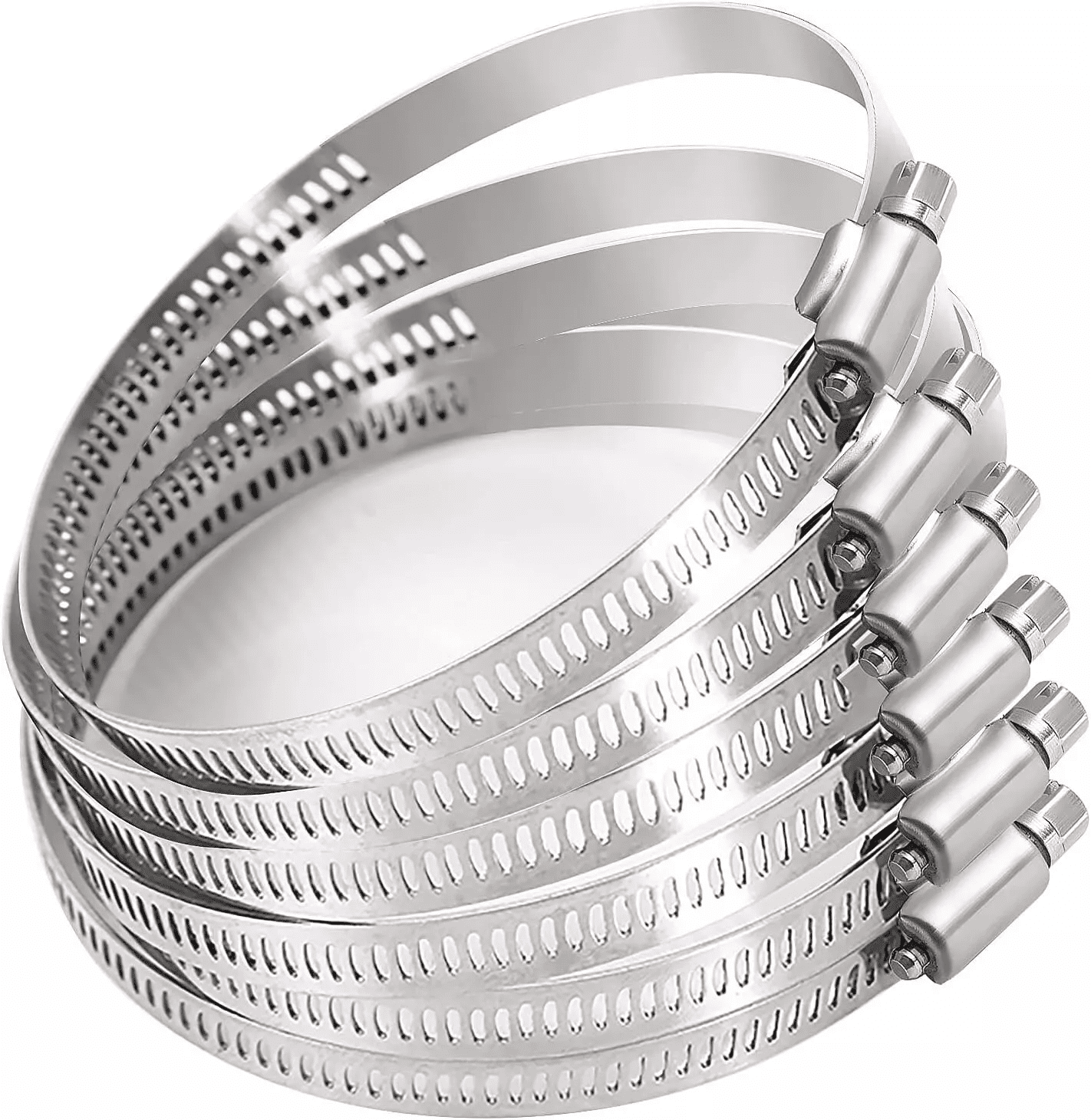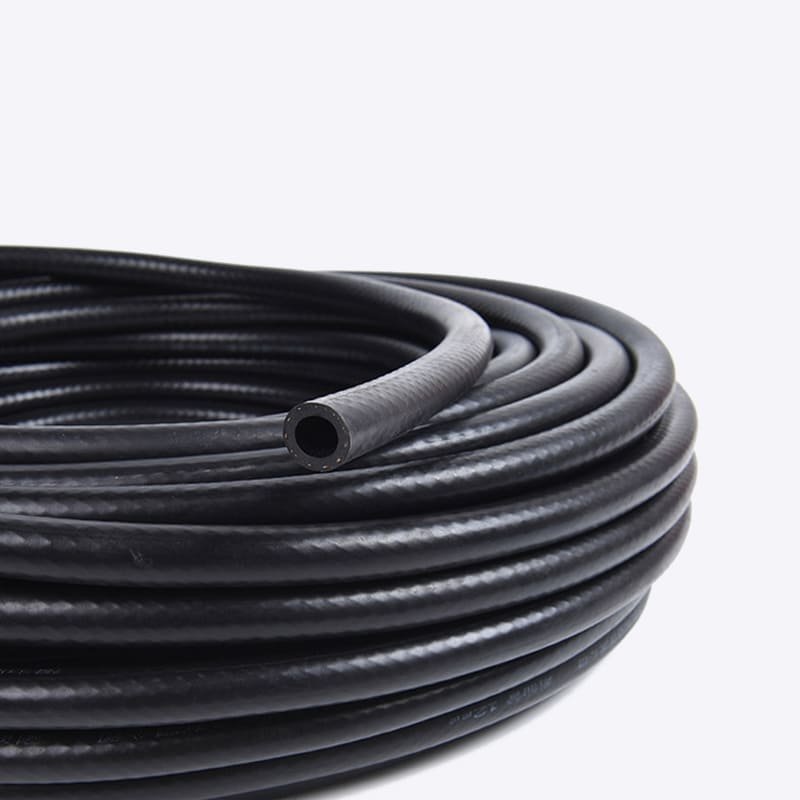Hose clamps are designed to secure hose connections and prevent leaks. They come in a variety of styles, but worm gear clamps and spring hose clamps are the two most widely used. This article will help you understand the structural differences, advantages, and disadvantages of these two types.
Worm gear clamps are manually tightened using a screw drive and are suitable for applications with varying diameters and medium pressures. Spring hose clamps rely on constant spring tension to automatically adjust to the expansion and contraction of the hose. Worm gear clamps are commonly found in plumbing and general-purpose applications, while spring clamps are more suitable for automotive cooling systems, which are subject to high temperatures and vibration.
What are worm gear clamps?

Worm drive hose clamps consist of a stainless steel band and a threaded screw. They are high-torque clamps; as you turn the screw, the band gradually tightens, securing the hose.
You’ll find the advantages of worm gear clamps:
- They accommodate a wide range of hose diameters.
- The tightening force can be adjusted as needed.
- They are low-cost and readily available.
- Typical applications include pipe connections, garden hoses, and low- and medium-pressure fuel lines.
What Are Spring Hose Clamps?

Spring hose clamps are made of spring steel and are typically ring-shaped with protruding lugs. They feature an adjustable spring mechanism that automatically contracts as the hose expands and contracts due to temperature fluctuations.
These clamps are widely used in automotive cooling systems because they maintain tension despite high temperatures and vibrations.
Difference Between Worm Gear Clamps and Spring Hose Clamps
Worm gear clamps secure hoses using screws and steel bands. The clamping force can be manually adjusted, providing a strong seal. They are ideal for applications requiring a strong hold, such as automotive water, fuel, or air conditioning lines. However, installation requires tools, making removal and adjustment more complex.
Spring hose clamps automatically clamp the hose using the inherent contraction force of the spring steel. They automatically adjust the clamping force with temperature and pressure changes, reducing the risk of hose leaks. They are ideal for environments subject to significant thermal expansion and contraction, such as engine cooling systems and hydraulic systems. They are also quick to install, requiring only pliers, and offer easier maintenance.
Advantages of Worm Gear Clamps
A wide range of sizes is available. High clamping force, no worries about leaks and instability.
- Easy to install with a standard screwdriver.
- Flexibly adjusts tightening force.
- Low cost and affordable.
- Suitable for plumbing, irrigation, and light automotive repairs.
Disadvantages of Worm Gear Clamps
Overtightening can damage the clamp. Undertightening can cause leaks.
Not suitable for high-pressure environments; prolonged exposure to high temperatures and vibration may cause loosening.
Advantages of Spring Hose Clamps
- No need to tighten them manually—the spring clamp automatically adjusts to changes in temperature and pressure, maintaining a secure seal even as the hose expands or contracts.
- Easy to install, allowing for quick installation and removal.
- Provides uniform pressure around the hose, reducing leaks.
- Reduces risk of hose damage.
- Higher reliability over long-term use.
Disadvantages of Spring Hose Clamps
You also need to make your customers aware of their limitations:
- Fixed dimensions, limited flexibility.
- Installation often requires a spring hose clamp tool.
- The tightening force is limited, not as strong as a worm gear clamp.
- Not suitable for high-pressure piping environments.
Are Worm Gear Clamps Good?
Worm gear clamps are perfectly reliable in general applications. They perform reliably in plumbing and some automotive repairs. However, if the customer faces high temperatures and high vibration, a spring clamp or Oetiker clamp may be more suitable.
Which Type of Hose Clamp Is Best?
Different applications require different types of clamps.
- T-bolt clamps: High-pressure turbines and industrial piping.
- Spring clamps: Automotive cooling systems.
- Worm gear clamps: General-purpose, low-cost applications.
Worm Gear Clamps vs. Spring Hose Clamps Cost
In a cost comparison:
- Worm gear clamps are less expensive.
- Spring clamps are slightly more expensive, but their superior performance makes them more popular in the automotive market.
Can You Over-Tighten Worm Clamps?
Yes, worm clamps can be overtightened. However, overtightening can crush the hose, cause cracks or tears, or even damage the clamp itself, compromising the seal. Installation should be based on hose specifications and recommended torque to ensure sufficient clamping force for a seal without damaging the hose.
Will worm clamps loosen over time?
Worm clamps may become slightly loose over time, especially if the hose is subject to thermal expansion and contraction or significant vibration. You can check them regularly and retighten them as necessary to keep the hose secure and reliable.
What size hose clamp should I use?
When choosing a hose clamp size, you should base your decision on the hose’s outer diameter. The clamp’s inner diameter should be slightly larger than the hose’s outer diameter to allow for adjustment during installation, but not too large to prevent a loose clamp. Please contact us with your application details so we can recommend a suitable size.





